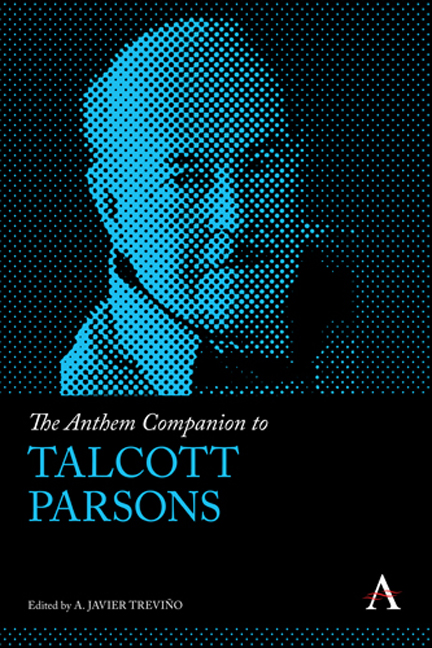Book contents
- Frontmatter
- Content
- Introduction
- Part I Political and Humanist Concerns
- Chapter One Fighting the Deadly Enemy of Democracy: Sociology against National Socialism
- Chapter Two Parsons's Critique of the Power Elite Thesis: Foundations for a Comprehensive Theory of Power
- Chapter Three The Expressive Revolution and the University: Parsons vs. Gouldner
- Chapter Four Parsons, Psychoanalysis and the Therapeutic Relationship
- Chapter Five Meanings of Life and Death: Insights of the Human Condition Paradigm
- Chapter Six Luhmann's Reception of Parsons
- Part II Social Evolution and the American Societal Community
- Contributors
- Index
Chapter One - Fighting the Deadly Enemy of Democracy: Sociology against National Socialism
from Part I - Political and Humanist Concerns
Published online by Cambridge University Press: 22 July 2017
- Frontmatter
- Content
- Introduction
- Part I Political and Humanist Concerns
- Chapter One Fighting the Deadly Enemy of Democracy: Sociology against National Socialism
- Chapter Two Parsons's Critique of the Power Elite Thesis: Foundations for a Comprehensive Theory of Power
- Chapter Three The Expressive Revolution and the University: Parsons vs. Gouldner
- Chapter Four Parsons, Psychoanalysis and the Therapeutic Relationship
- Chapter Five Meanings of Life and Death: Insights of the Human Condition Paradigm
- Chapter Six Luhmann's Reception of Parsons
- Part II Social Evolution and the American Societal Community
- Contributors
- Index
Summary
Some voices in American sociology maintain to this day, or so it seems, that Talcott Parsons, the staunch defender of American democracy, was apolitical inasmuch as he dubbed himself an “incurable theorist.” Critics even accuse him of having been utterly conservative, if not inadvertently a fellow traveler of fascism in Germany. The charge was refuted as preposterous as soon as it was raised (again) in the 1990s, but the label had been given to him just before the 1960s, raised as it was by the then “angry young men,” the mentors of The Disobedient Generation.
Parsons, to note, had been horrified by what National Socialism did to German politics and culture, destroying as it did Weimar democracy even prior to the ascendency to power of the Nazis in 1933. In a four-year effort, in The Structure of Social Action, Parsons completed an analysis of anomic society that characterized the Germany of his day, contrasting it with the integrated society of the New Deal in the United States. He opposed Nazi Germany openly when the pogroms of November 1938 made it obvious that the inhumanity of the regime was no mere transient feature but actually threatened the culture of civilization as such:
To mention no other considerations, that which is, as a cultural movement, distinctive about National Socialism is deeply hostile, in particular to the spirit of science and the great academic tradition, and more generally to the whole great cultural and institutional tradition of which these are an integral part. This makes it necessarily a deadly enemy for us. We must oppose it with all our strength.
Six years later, in November 1944, his condemnation of National Socialism had lost none of its rigor, but his sociological understanding of German fascism had gained considerably in conceptual depth and ability to account for historical facts. He jotted down in notes titled “The Case of Germany” the characteristics of the regime whose mass crimes were becoming increasingly undeniable by the day:
Grandest scale movement of violent group prejudice & socially organized hostility to others of which we have record anywhere.
- Type
- Chapter
- Information
- The Anthem Companion to Talcott Parsons , pp. 23 - 42Publisher: Anthem PressPrint publication year: 2016

